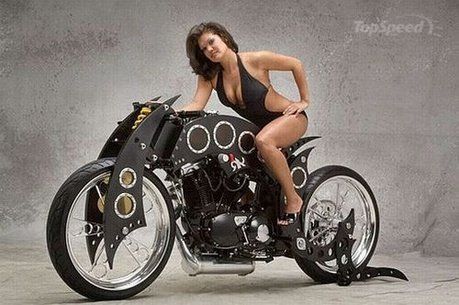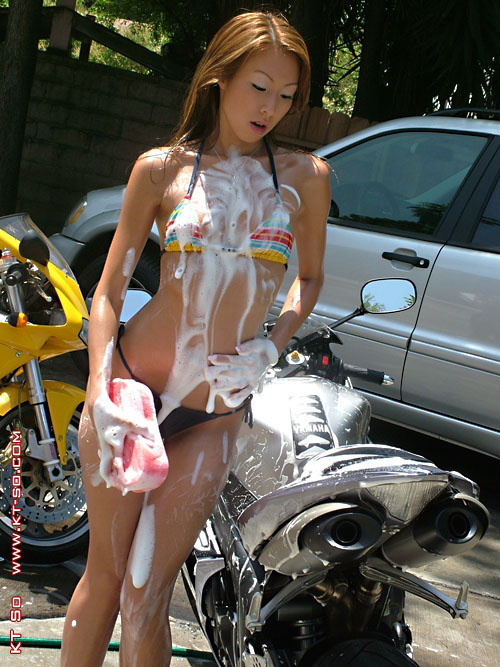By Rinus Kempel (translated by Carl Drees)

[The dream to build his own Velocette became reality for Rinus Hempel-member of the Dutch Velocette Club- once he returned home from 4 weeks stay at the local hospital. Rinus was treated for complicated fractures of both legs as a result of an nasty accident with an elevator at a building site. During his recovery which took more than 2 years Rinus could obviously not ride his Venom or handle bikes in his workshop. Already experienced in scale models he took up the challenge of home production of a replica Velocette Venom. In total more than 2000 hours would be spent to complete this job to his satisfaction. It was during the 100 year Velocette Show organized by members of Velocette Club Nederland that Rinus presented his “made in Holland” Velocette to more than 1500 visitors. An unique public appearance among all other Velocettes on show. In this story Rinus explains some details of the many complications and why he will never do it again!]

"The idea to build my own Velocette came only gradually once I started to make my first item; the 2LS john Tickle front brake. My home workshop is equipped with a small lathe and milling machine. As I wanted the brake to function, I concluded that 1: 4 scale would give the dimensions to handle the machining etc of all the components.
Once the brake was ready, I continued to make 2 complete wheels. This required besides the front and rear hub, to machine on the lathe 2 rims from solid aluminium. Each rim needed to be provided with 40 bulb-type deformations before drilling of all spoke nipple holes. A special tool was made to rotate the rim every 9˚. It all looked to be possible- but one thing was
 overlooked being that the aluminium material I had chosen was too hard –so instead of the spoke dimple it showed cracks. There was no other choice than to select a softer aluminium and machine 2 more rims.
overlooked being that the aluminium material I had chosen was too hard –so instead of the spoke dimple it showed cracks. There was no other choice than to select a softer aluminium and machine 2 more rims.For the spokes stainless steel welding wire of 1 mm dia was chosen. A special tool was made to form the hub ends by hammering and to bend it approx. 90˚.The other ends had to be threaded for which job the local jeweller lent me his M1 die. The stainless steel quality and 80 spokes made this a hell of a job to do. Same applies for the 80 nipples-all to be tapped with M1 thread . For the actual wheel building the hubs were held in a central stand and the rim placed around it. The spoke pattern had to be same as the original Velo- the lacing job really got to my nerves and it took a lot of time to do it right.
The next challenge was to copy the frame. Luckily an original frame was available to measure all the diameters, tube lengths, angles and curves. The measurements taken were then divided by 4. The lugs were built up in 2 or 3 sections to be assembled by silver soldering. The basic tube material was 10 mm with a 4 mm hole. Its final diameters were machined on the lathe. After cutting all tubes to length the frame was assembled for will fit control- and once found ok it was fixed by silver soldering. The rear frame was added and meanwhile also the tele front fork and rear shock absorbers were built. All these parts assembled together resulted in the complete rolling chassis.

Being satisfied with the good look it also formed the next invitation to start the more attractive part of the job, i.e. the manufacturing of engine and gearbox.
Again the approach was to measure the original gearbox which I could borrow from Velo fellow Rob Cornet [see post on Dutch sprinters - pd'o]. Also it was decided that the kick starter crank and gear change pedal had to function under spring load. The gearbox was machined accordingly at the milling machine and finished off with a lot of elbow grease.
After completion the gearbox was provided with rear mounting plates – material 1.5 mm steel plate - so it could be placed in the frame.
Same approach for the engine. Again Rob lent me a crankcase assembly to be measured for the machining of a look a like scale copy. Equal to the original it was made in 2 halves. The timing half gave difficulties during machining of the chest at the milling machine- so I had to make it twice. Also somehow I made some mistake during measuring of the engine main fixing bolt holes- so when in position the engine tilted about 5˚ forward. This was unacceptable for me, so it was necessary to make the rear engine plates once again whereby the bolt hole positions were slightly changed to correct my mistake with the engine. Once ok the front engine plates were made to fit. The end result looked really fine.

Now I needed to make the cylinder and cylinder head assembly; for both I had original parts available from my own spares. The cylinder was machined on the lathe and the square flange was made to match the crankcase mouth. The cylinder fins were made out of 0.6 mm plate- in total 11 each separated by a distance ring. The thickness was determined by the total height of the cylinder.
The cylinder head and rocker box proved to be even more difficult than the crankcase. Only after several repeats I was satisfied with the result.
All sheet metal components required a lot of inventive tooling. The primary chain case needed a mould to press 2 halves into its final shape.
The mudguards were made from 22 mm tubing. Once bent into shape the tubes were cut with a belt sawing machine and the outer sections were used to make the mudguard blades.
It took me a long time before I managed to build the petrol tank.- I prefer not to think about it again! I am happy about its good look.

Many people asked me how I made the Fishtail! For this job I used brass material 50 mm diameter. It was cut in length into 2 pieces, which were reduced in thickness on the milling machine such that the 2 halves together show the same shape as the Fishtail muffler. Than I joined these together by soft soldering after which the final modelling took place by lathe, mill and of course lots of elbow grease. The fishtail end required the 45 holes to be drilled in the offside of the tail. The other end needed to be drilled for the exhaust pipe. Once I was really satisfied with the perfect shape the assembly was heated so the soldering got loose giving two halves again.
With the help of the milling machine both halves were machined internally to create the internal space for the muffler. This is a very careful job as a little to deep and the cutter breaks through to the outside leading to be forced to do this time consuming job all over again!! To finish it was soldered together again but now with a thin brass plate in-between to give the flat rolling weld look. Finally some more polishing, after which the Fishtail was chromed.

Initially I considered it too much to make all bolts and nuts myself. So I decided that I would apply those available from the modelling specialist, only to find that the size was just not accurate and moreover the material was not rust free. Not happy with the poor look I was forced to make myself all bolts and nuts in Stainless Steel using the correct hexagon materials.
Besides the magneto-carburettor-and dynamo there were many other accessories which asked for creativity. To mention a few; the seat base was made by myself in sheet metal, and the upholstery was done by a specialist. The rear light was made from an old screwdriver handle, and the rear reflector disappeared from the pedal of my neighbours pushbike. The secondary chain links were made out of 0.5 mm sheet metal. The rollers were machined on the lathe –all
 drilled with 1.1 mm bores.
drilled with 1.1 mm bores.The pins were made from 1 mm SS welding wire. Each was made to length and with a 100 grams hammer the heads were formed at one side. As the chain wheels were already made earlier- I encountered difficulties to match the pitch for the chain links. After several experiments I found the correct dimensions so a clamping device was made to drill all links precisely to allow the chain to follow the chain wheel smoothly.
All parts assembled the pins were given a little pinch by hammer and so the chain was completed to my satisfaction.
To finish off the job I purchased a mini spray gun from the modelling shop and applied 2 component paint system. This dream took me more than 2000 hours- which gave me lots of fun but also occasional moments of frustration that I would never complete it.
 But I never gave up. The bike is kept under a dust free cover and is now my most unique Velocette being the only Velocette made in Holland.
But I never gave up. The bike is kept under a dust free cover and is now my most unique Velocette being the only Velocette made in Holland.By the way I was also lucky to recover from my injuries so I still enjoy riding motorbikes as well.
"
Original story by Rinus Hempel in Visstaart 147,
translation by Carl Drees.








No comments:
Post a Comment